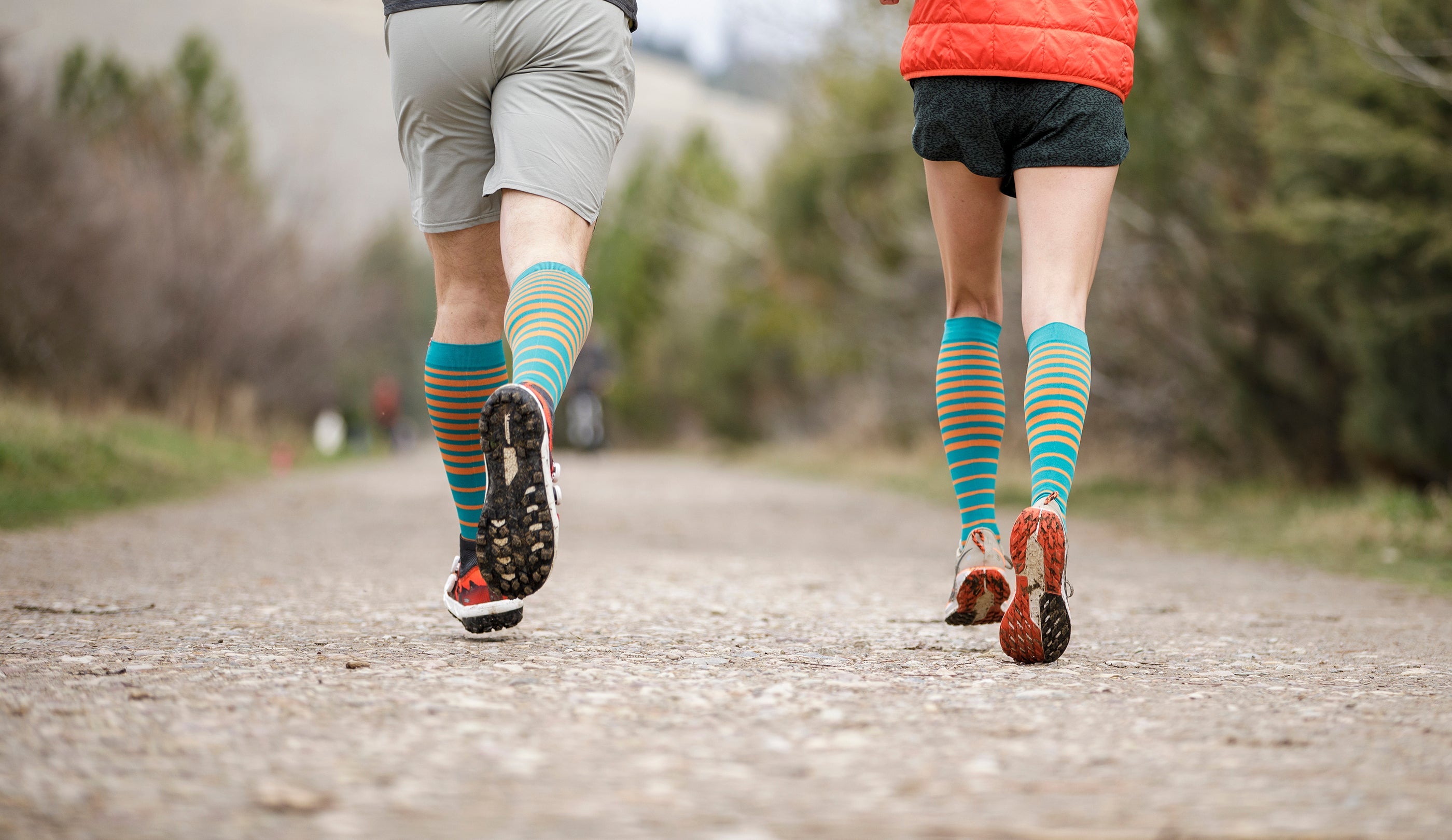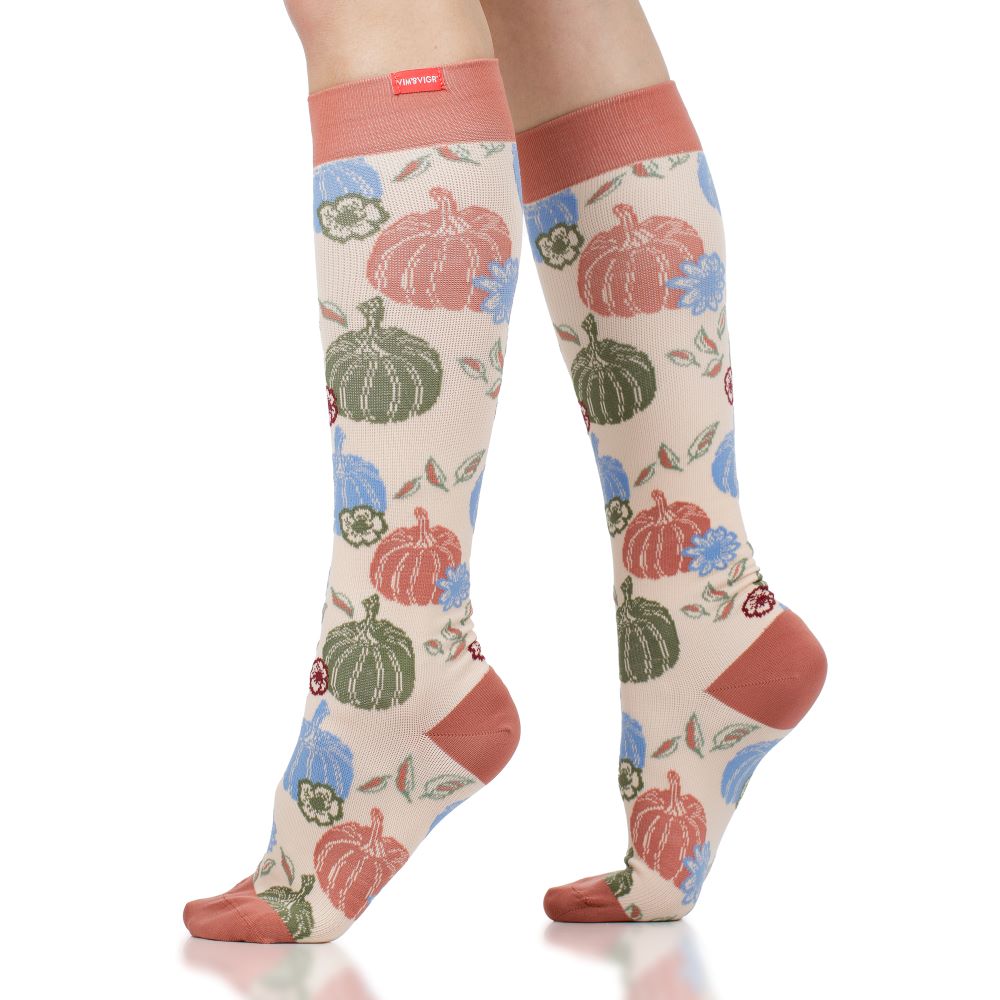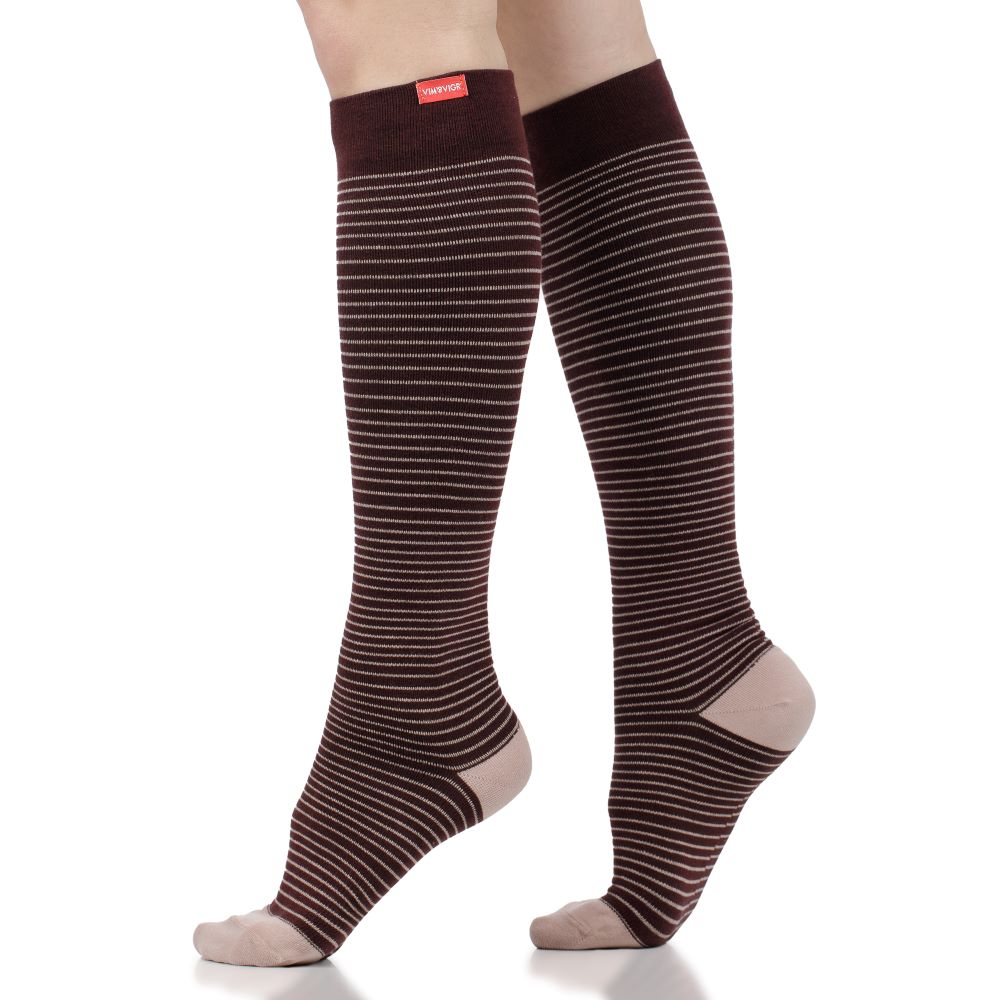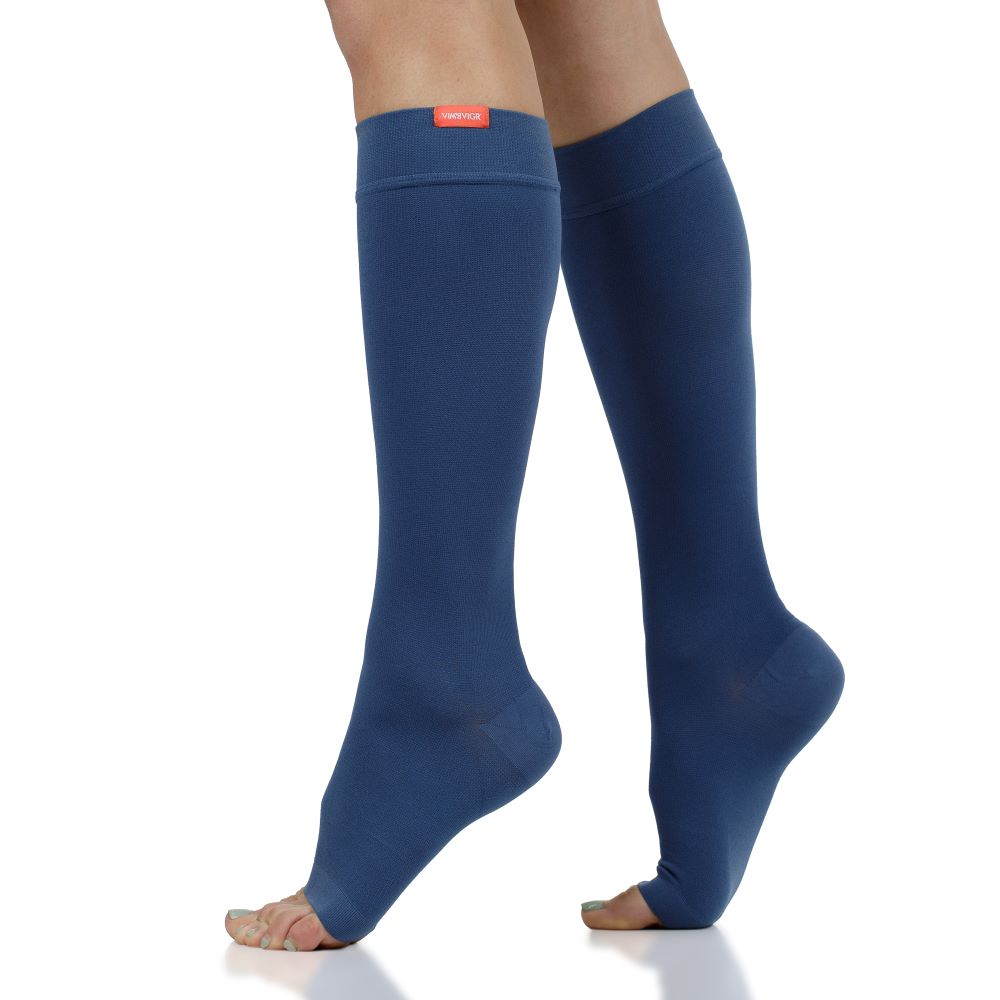Compression Socks for Stress Fracture Recovery and Prevention
Stress fractures are some of runners’ and athletes’ most feared injuries: they are classed as “overuse injuries” – which means they occur after repetitive force is applied to a bone. Typically, stress fractures are tiny cracks in the bones of the feet or in the shin bone (tibia), caused by jumping or running long distances.
How can compression socks help after a fracture? Can they promote better recovery once you’ve had a stress fracture? And can you use compression socks to prevent getting one?
Thanks to their stabilizing and supportive action, there are many benefits from wearing compression socks to avoid injury and to help your bones and joints recover better while strengthening them as well.
Read on to find out:
- How compression socks can help with stress fractures;
- Why stress fractures arise and who gets them;
- The benefits for recovery and for prevention from wearing compression socks;
- How to choose the best compression socks or stockings for your case.
Do Compression Socks Help Stress Fractures?
Compression socks by themselves will not necessarily heal a stress fracture. However, thanks to the gradual gentle pressure applied to the limb, and to the stabilizing and supportive effects they have, they are able to reduce swelling and alleviate pain. Wearing compression socks also helps reduce the pressure on the many nerve endings on your feet, by draining fluid away.
Additionally, the repair process needed during stress fracture recovery can be boosted by wearing compression socks. Since they promote better blood flow, they help the body transport more oxygen and nutrients to the lower limbs. In turn, this supports recovery of damaged tissues.
Compression socks also support the ankles, which can lead to reducing the risk of stress fractures caused by an irregular, awkward movement (twisting or spraining the ankle). Of course, the support will be beneficial for recovering from ankle fractures.
Finally, another one of the bones where stress fractures occur often, especially for runners, is the shin bone or tibia. Compression socks apply gentle, graduated pressure to the lower limbs up to below the knee, therefore supporting and relieving fluid build-up around the tibia.

What Are Stress Fractures and What Causes Them?
Stress fractures are tiny cracks in the bones, most often a broken bone injury. These are extremely common for runners and athletes in general, because of the intricate configuration of bones present in our feet. In fact, almost 10% of all broken bones take place in the foot.
The key difference between stress fractures and any other type of broken bone injury is that the former are very small, and that they occur from repetitive force. This can be an abnormal level of force, from repeated jumping or running hard, or it can be a much lower intensity if the patient in question has an existing condition that has weakened the bone (for example, osteoporosis). Stress fractures also come about when intensity or volume is increased rapidly – for example, when runners start doing more and harder workouts without appropriate rest periods in between.
Some people may not notice that they have a stress fracture to start off, as pain caused by it begins at a low intensity and can get worse over time. By the time stress fractures are discovered, most people will have some swelling around the painful area and will feel pain starting in a very specific spot, which then decreases with rest.
Why do stress fractures happen?
The force exerted on bones during repetitive and intense hiking, running, jumping etc., without adequate recovery, causes them to resorb cells faster than the body can replace them. This is the core reason for stress fractures to develop.
When are you likely to get a stress fracture?
There are some increased risk factors or scenarios associated with developing stress fractures. These include:
- Specific sports: track and field, gymnastics, basketball, tennis, or dance are more likely to lead to a stress fracture than others;
- A noticeable shift in activity levels: when people change their lifestyle considerably, e.g. becoming very active after having been mostly sedentary, can get stress fractures. The same is the case for moderately active people who increase the intensity, frequency or duration of their training sessions very quickly and in great proportion;
- Gender: women with abnormal or missing menstrual periods are more likely to develop stress fractures. They are also at high risk of osteoporosis as they advance in age;
- Weak bones: if your bones are weakened by conditions like osteoporosis, it’s easier to suffer a stress fracture;
- A sub-category of this is when you already have a history of stress fractures, this puts you at higher risk of having one again – it’s either an indicator of inherent frailty in the feet bones, or some other condition;
- Foot problems: stress fractures sometimes occur in patients who have high, rigid arches or flat feet. Footwear also influences this, and worn shoes that are no longer providing the required level of support can lead to a fractured bone;
- Nutrition: those who suffer from eating disorders or people with low levels of vitamin D and calcium have weaker bones, which makes it more likely that they will have a stress fracture.
The Benefits of Compression Socks for Stress Fractures
Once you’ve suffered a stress fracture, the first few steps towards recovery include rest, moving to a different type of activity (a low-impact one ideally), and then of course, diagnosing the fracture accurately by seeing a doctor.
Untreated stress fractures can get much worse and lead to complications, so it’s important that any suspected bone injuries of this kind are looked into and diagnosed promptly. Then, once you have a clear plan of action from your doctor, you can boost your recovery thanks to compression socks.
Wearing compression socks helps especially with fractures in your foot, as they help relieve tension and pain, as well as move blood and oxygen better and quicker to your lower limbs, promoting recovery. Compression socks also support your ankles better, avoiding any awkward movements.
Compression sleeves, which cover your lower leg from the ankle up to below the knee, can have the same benefits specifically for your shins (tibia). You might prefer to wear sleeves when you want to allow your feet to breathe, or when you need more versatility for a summer outfit (wanting to wear sandals, for example).

Using Compression Socks After Fracture for Faster Recovery
During recovery after a stress fracture, you can wear compression socks in the immediate aftermath, as long as your feet or shins are not too painful or it’s not too problematic to put the socks on (remember, compression socks fit tightly and could be tricky to put on, so it’s better not to aggravate a limb that’s already suffering!).
To help your lower limbs recover, in addition to resting and following your doctor’s advice, you can enjoy the gentle pressure from compression socks and the benefits of increased blood flow and reduction in swelling and pain. Using compression socks will also give you a feeling of welcome, gentle support against aching limbs – and you may find that you will continue to use them after you’ve recovered from your injury, to maximize muscle recovery and generally feel better after a hard workout or day on your feet!
Wearing Compression Socks for Stress Fracture Prevention
Runners enjoy wearing compression socks for their multiple benefits: boosting blood circulation, helping recover the muscles from hard efforts, and supporting muscles and joints through repetitive motion.
Aside from improving blood flow, compression socks can help with a better overall fit of garments on your lower body. The following steps should be taken at the same time, to reduce the likelihood of suffering a stress fracture:
- Wear well-fitting shoes and appropriate apparel for your activity (so, running shoes for running, good hiking boots for hiking etc.);
- Look into getting arch support for flat feet;
- Start any new routine or training program slowly and progressively – don’t make massive changes suddenly and don’t increase volume or intensity too soon;
- Cross-train with low-impact activities and strength building, avoiding repetitive stress on any part of the body and strengthening the muscles so they can better support your bones;
- Ensure your nutrition includes good sources of calcium, vitamin D and a good balance of nutrients overall.
You can wear compression garments for 24 hours at a time, but we advise that you choose the style and material that works for you and then try them for a few hours at a time at first. We also recommend that you start off with a lower level of pressure, before increasing it if you become too comfortable with it.
The Best Compression Socks for Broken Foot
Whether for a broken foot, shin splints or stress fractures of the tibial bone, compression socks can be a powerful ally to help you recover and feel better during the recovery process as well.
To make sure you choose the best compression socks for a broken foot, here are some tips:
- Consider the temperature and general weather conditions when you’ll be wearing the socks. If you wear them in hot and humid weather, merino wool or moisture-wick Nylon compression socks will help keep your feet and legs dry and more comfortable overall;
- Pick a lower compression level to begin with, and slowly increase if you feel that you need to;
- Ensure you get the right size of compression socks: they should fit snugly, otherwise you will not get the benefits;
- Look after your socks to keep them working their magic for the longest time possible.
How to Choose Compression Socks for Stress Fractures
Recovering from a stress fracture can feel long and frustrating, but with the help of some good-quality, comfortable compression socks that protect your lower limbs and boost blood flow, you will be feeling better and more supported than ever. Choose from our large range of socks and sleeves in various colors, pressure levels, and materials, to complement your style and make sure that you recover from and prevent stress fractures in the future.


















I love my red and black merino socks. I have always hated knee Sox but these are somehow different. Please make more merino plaid Sox.
Leave a comment